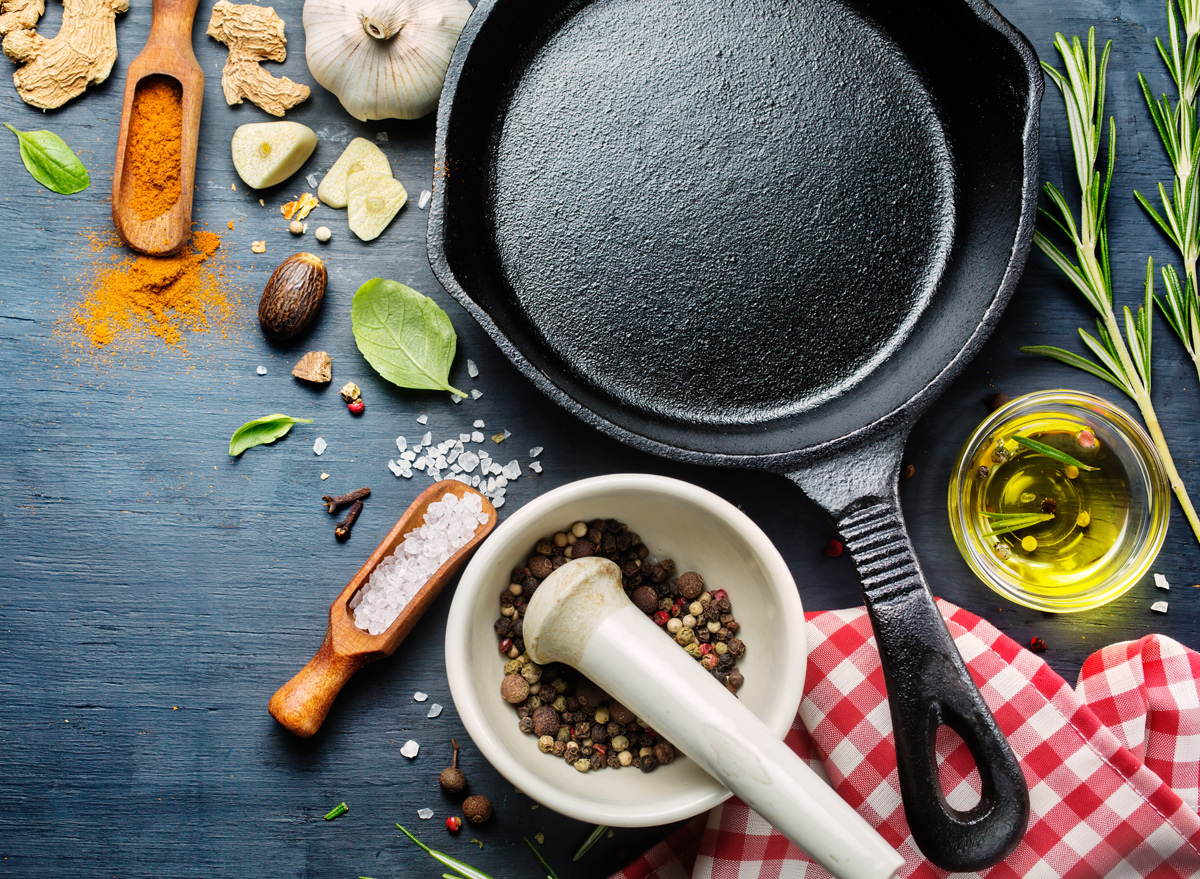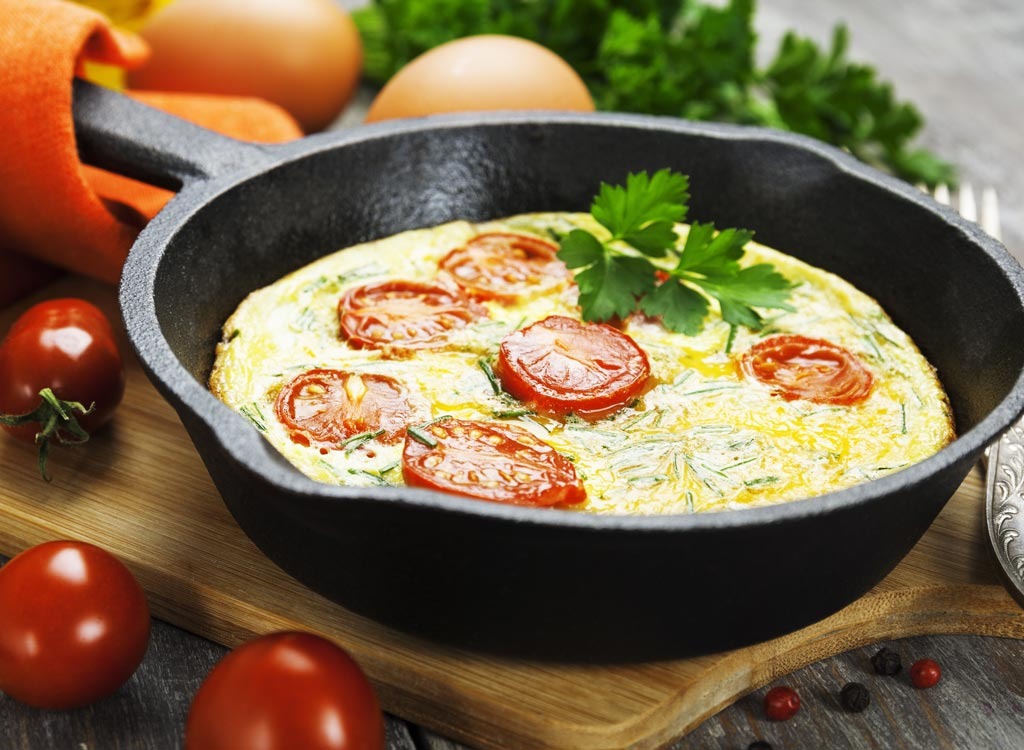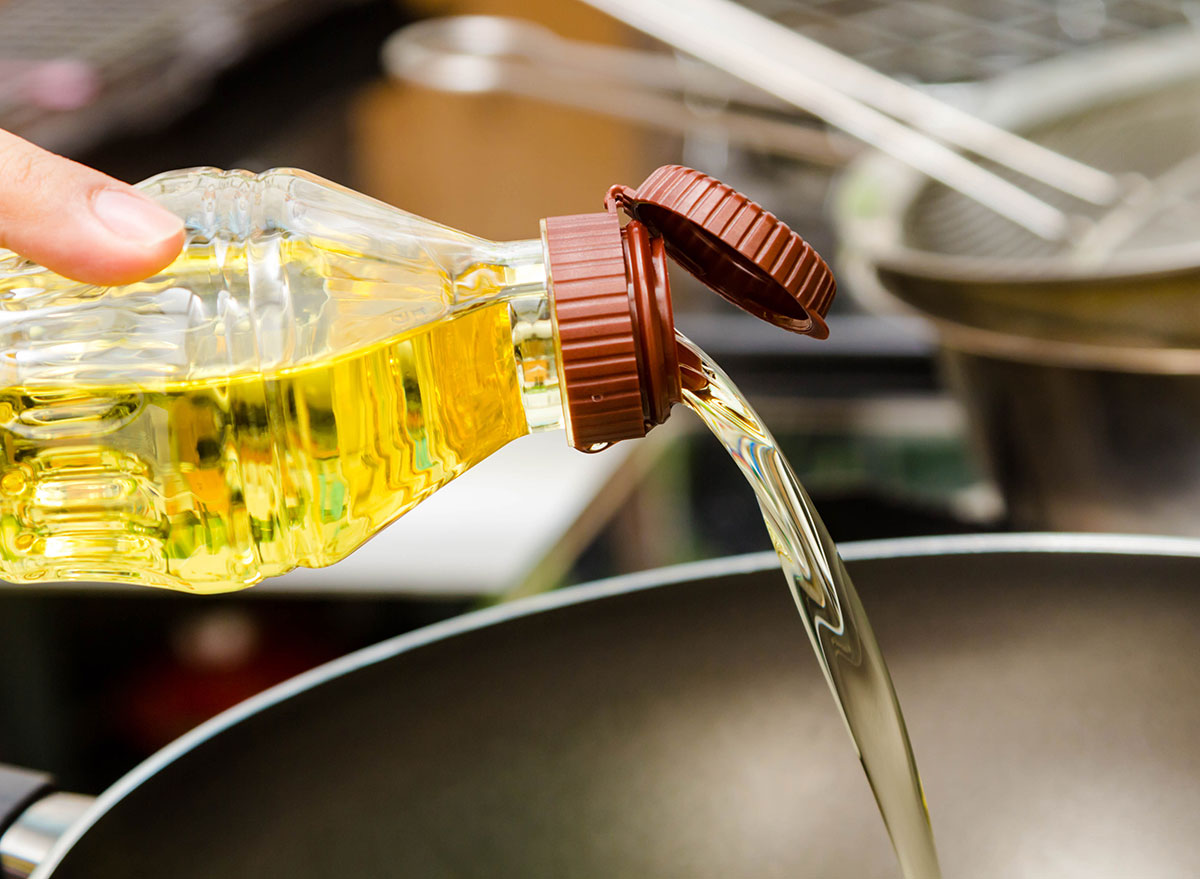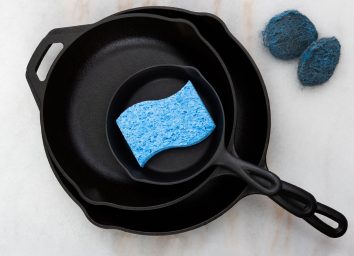How to Perfectly Season a Cast-Iron Skillet

You know that your trusty cast-iron skillet can basically last forever—but what most people don't know is that the iron cookware must be pre-seasoned in order to maintain its non-stick and rust-free surface. Usually, you can purchase a pre-seasoned cast-iron pan, but if you haven't done so, fret not: You can easily season your cast-iron skillet yourself! And doing so is way easier than you think with just a few common household staples such as oil and salt.
To keep your pricey pot good as new, we've enlisted the help of Pete Balistreri, Tender Greens Chef and VP of Stores, to show us how to season the kitchen staple before use. Heed the tips below, and be on your way to crafting more flavorful cast-iron-made meals at home!
How to season cast-iron skillets

- Preheat the oven to 450 degrees Fahrenheit.
- If the skillet is new, wipe it with a dry paper towel. If the skillet is dirty, place it over medium/high heat with one thin layer of kosher salt over the skillet's surface. Heat pan until the surface is hot. Let the skillet cool and scrub it with a folded dishtowel with the salt still in the skillet.
- Remove the salt.
- Use a paper towel to apply a coat of vegetable oil or, preferably, flaxseed oil to all surfaces of your skillet (even the bottom and handle).
- Place an aluminum-foil-covered sheet pan on the bottom rack of your oven. This will catch any oil or particles that fall during the seasoning process.
Once preheating is complete, place your skillet upside down on the top rack of your oven. - Bake the skillet for one hour at 450 degrees Fahrenheit.
- Turn off the oven and let the skillet cool in the oven for safe handling. Once the skillet is cooled down, remove it from the oven and wipe it with a dry paper towel.
- Repeat steps 3–8 once more.
What oil should you use to season your skillet?

"Aside from the recommended flaxseed oil, you can season your cast iron skillet with any unsaturated oil," Balistreri says, noting that you should avoid saturated oils such as lard and grease. "Unsaturated oils include canola and vegetable oil. They are chemically structured in a way that helps them polymerize to the metal, which helps create that non-stick surface on a cast-iron skillet."
Lodge, the company that's well-known for its cast-iron skillets, also offers a conveniently packaged Lodge Seasoning Spray that's 100% pure canola oil, and its convertible top allows you to drip, stream, or spray the oil onto the skillet.
Aside from choosing an unsaturated oil, you should also look out for a fat that has a high smoke point. "Soybean oil is another great option after flaxseed given its high smoke point. Avoid using low smoke point oils, such as extra virgin olive oil, avocado oil, and butter," Balistreri says.
We can't wait to test these tricks before searing a ribeye for supper! Now that you know how to season your trusty cookware, you'll want to jot down how to clean a cast-iron skillet so that it lasts even longer. And for more on the latest cooking tips, sign up for our newsletter.








